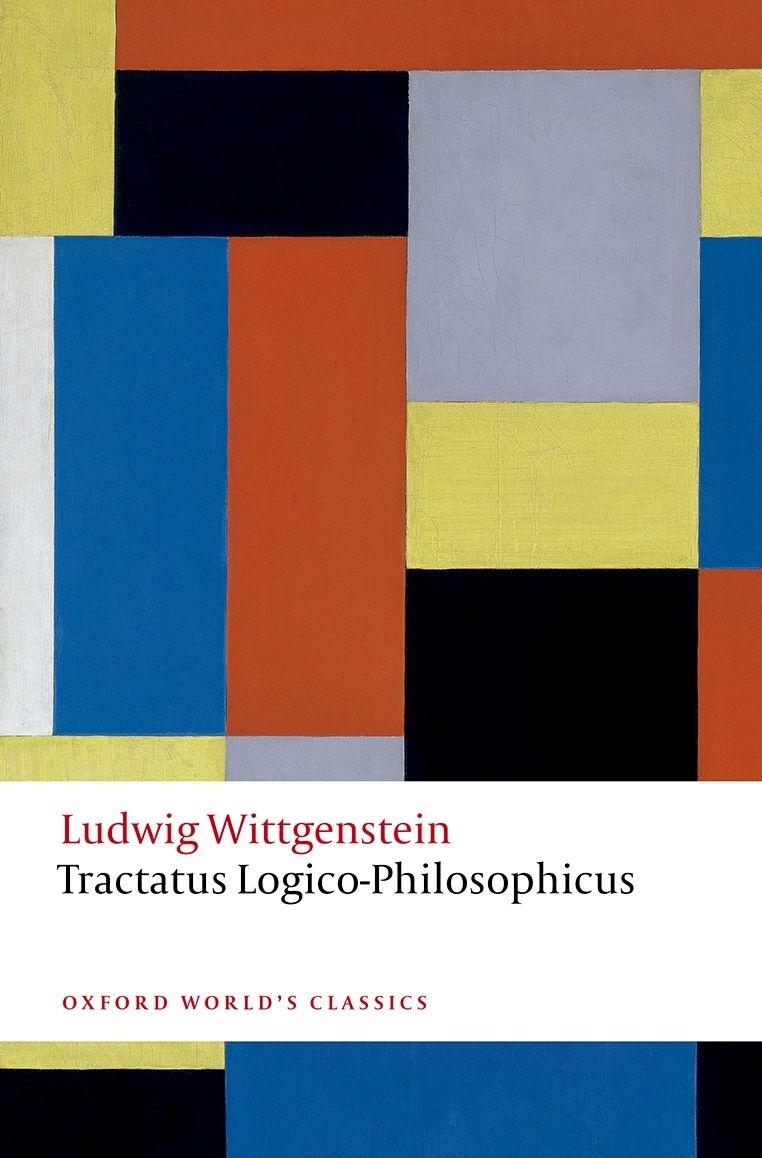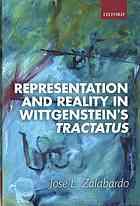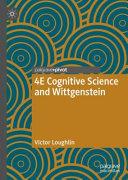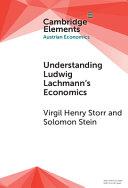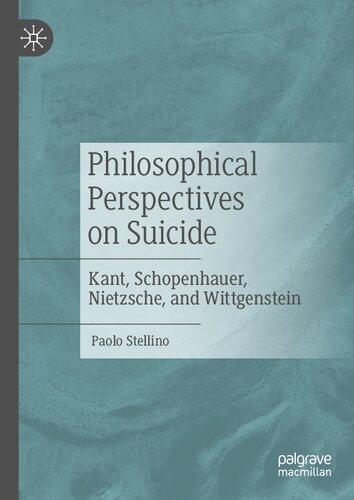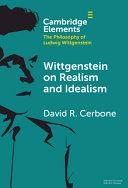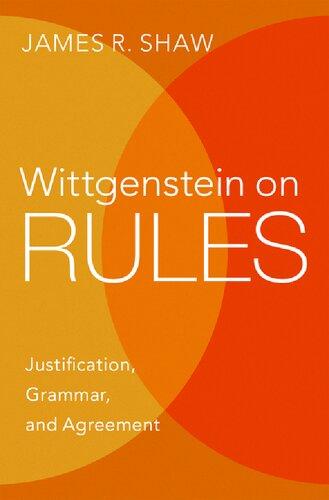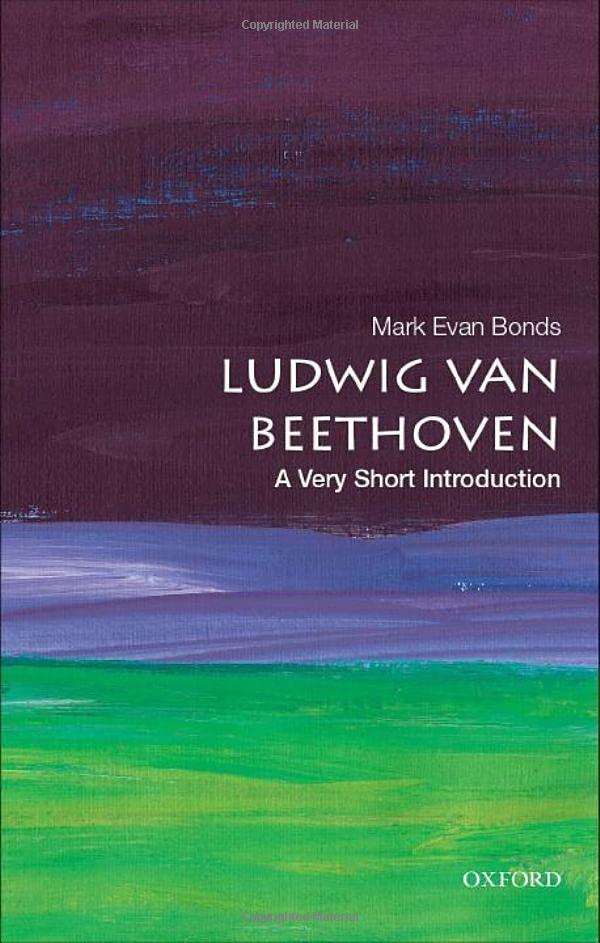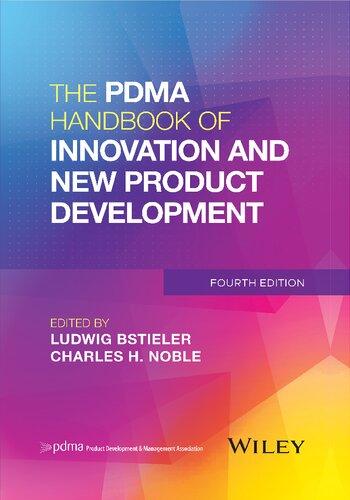OXFORD WORLD’S CLASSICS
LUDWIG WITTGENSTEIN
Tractatus
Logico-Philosophicus
Translatedwithan Introduction andNotes by
MICHAEL BEANEY
Great Clarendon Street, Oxford, OX2 6DP, United Kingdom
Oxford University Press is a department of the University of Oxford. It furthers the University’s objective of excellence in research, scholarship, and education by publishing worldwide. Oxford is a registered trade mark of Oxford University Press in the UK and in certain other countries
Translation and editorial material © Michael Beaney 2023
The moral rights of the author have been asserted
All rights reserved. No part of this publication may be reproduced, stored in a retrieval system, or transmitted, in any form or by any means, without the prior permission in writing of Oxford University Press, or as expressly permitted by law, by licence or under terms agreed with the appropriate reprographics rights organization. Enquiries concerning reproduction outside the scope of the above should be sent to the Rights Department, Oxford University Press, at the address above
You must not circulate this work in any other form and you must impose this same condition on any acquirer
Published in the United States of America by Oxford University Press 198 Madison Avenue, New York, NY 10016, United States of America
British Library Cataloguing in Publication Data
Data available
Library of Congress Control Number: 2022950789
ISBN 978–0–19–886137–9
ebook ISBN 978–0–19–260565–8
Printed and bound in the UK by Clays Ltd, Elcograf S.p.A.
Links to third party websites are provided by Oxford in good faith and for information only. Oxford disclaims any responsibility for the materials contained in any third party website referenced in this work.
PREFACE AND ACKNOWLEDGEMENTS
IN my second year as an undergraduate at Oxford, at an introduction to transcendental meditation, I met someone who had just moved to Oxford, having given up his studies in philosophy at Cambridge. He told me that the only book worth reading was Wittgenstein’s Philosophical Investigations. I bought a copy at Blackwells on the way back and began reading it straightaway. I was gripped, and Wittgenstein has been with me ever since. Wittgenstein’s Later Philosophy was one of the options available as a PPE student, and I took it in my final year with Peter Hacker, who initiated me into its mysteries. Peter may well regard some of the views I now have on Wittgenstein as heretical, but I am grateful to him for challenging me both then and in all his subsequent writing to read Wittgenstein with the utmost scholarly care. Since the opening sections of Wittgenstein’s Investigations discuss his earlier ideas, I was inevitably led to the Tractatus Logico-Philosophicus. That text is notoriously difficult, but the received view in Oxford at the time was that it contained a set of assumptions and claims that Wittgenstein spent the rest of his life
criticizing. Although he had officially rejected metaphysics in the Tractatus, there were still some lingering metaphysical assumptions, and these had to be rooted out as well by a more ‘grammatical’ investigation.
As a postgraduate, I continued to work on Wittgenstein’s philosophy but now realized the importance of Russell’s and especially Frege’s work in understanding what Wittgenstein had been attempting to achieve in the Tractatus. He both develops some of their views and offers a powerful critique of others, and it became clear that there was more continuity between his early and later philosophy than many believed. Some of the ideas of the Tractatus continue to influence philosophers today, while others are transformed in subtle ways in his later work, which is only gradually being appreciated. My doctoral dissertation was on Frege and Wittgenstein, and I have been teaching and writing about their thought and the history of analytic philosophy, more generally, ever since. One of my favourite subjects at school had been German, for which I have to thank my teacher Ian Waters, and I translated some of Frege’s work for the edition I published in 1997, The Frege Reader. This made available, in a single volume, a selection of the key texts that are essential to understanding analytic
philosophy today—and Wittgenstein’s philosophy, in particular.
In September 2018, Luciana O’Flaherty of OUP contacted me to ask about publishing the Tractatus in the World’s Classics series, since it would be out of copyright in 2022, seventy years after Wittgenstein’s death, and if so, whether a new translation was preferable to the original one. I assured her that the Tractatus should be included in the series, as the classic of early twentieth-century analytic philosophy, and that a new translation was essential. Having translated some of Frege’s writings, I offered to translate it myself, not least as I used my own translations of it anyway, or revised those of others, in my teaching and writing. Luciana welcomed the offer and we met to discuss the project. I am grateful to Luciana for all her advice and support in guiding this project through from beginning to end.
I prepared a first draft of the translation in teaching a course on the Tractatus at the Humboldt University in Berlin in Summer Semester 2020. I circulated a document with three columns—the original German, my draft translation, and notes on the translation. The aim of the course was not just to make sense of the Tractatus but also to appreciate the issues involved in philosophical translation. The participants, many of whom were native German
speakers, were encouraged to comment on the translation, which helped in improving it. I thank the following for their valuable contributions: Andreas Berghaus, Sophia Bobic, Simon Brausch, Rebecca Eilfort, Joao Fidalgo, Milan Hartwig, Solveig Hepp, Ben Jähnert, Xiaolan Liang, Moritz Markowski, Lea Mosandl, Ben Rangnick, Tom Raysmith, Josephine Schulze, Peter Schwarz, Lukas Sonnabend, Martin Spielhagen, Myriam Stihl, Troy Vine, Arjun Wendrich, Christoph Werner, Bastian Wessalowski, Tao Xu, and Jiantao Zhang. The course was one of the most enjoyable that I have taught (despite having to do so online during the pandemic) and our discussions were instructive. The native German speakers often disagreed about what certain terms meant, which showed the importance of consulting widely, with the interpretive issues explained. We also considered alternative renderings and how they might be back translated into German, which helped us appreciate Wittgenstein’s actual formulations. In the end, though, the translator must rely on their own interpretation of the text and their native-speaker knowledge of the language into which they are translating to find the best rendering. So I take full responsibility for any errors or infelicities that remain. That same summer of 2020 I co-organized with David Stern a two-day online workshop on
translating the Tractatus, supported by a grant from the British Society for the History of Philosophy, for which I record our thanks. David had told me at a conference on Wittgenstein the previous autumn that he was doing a new translation of the Tractatus for Cambridge University Press, as part of a project that involved (re)translation of Wittgenstein’s writings leading up to the Tractatus. We agreed to collaborate, not on the translation itself, on which we had different views (such as on the rendering of ‘Satz’) and different constraints (such as our primary intended readership), but on thinking about the principles of translation to be followed. We invited various Wittgenstein scholars with an interest in issues of translation and interpretation, with a view to co-editing a collection of papers on the subject. The participants in the workshop were Cora Diamond, Philip Ebert, Juliet Floyd, Jim Klagge, Michael Kremer, Alfred Nordman, Martin Pilch, Alois Pichler, Erich Reck, Katia Saporiti, Joachim Schulte, Hans Sluga, Mark Textor, and two of my PhD students, Troy Vine and Thomas Raysmith, who made notes on the meetings. David and I each circulated in advance a paper formulating our views on translating the Tractatus, and we received extremely helpful feedback, for which we are both very grateful. I am also indebted to David for the
exchanges we have had, and our ongoing collaboration on the edited collection. I have not yet seen a draft of his translation, other than of a few key propositions, but I look forward to that, as a valuable complement to my own. The more good translations there are of a text, the more one can triangulate on its meaning.
Following the workshop I circulated various drafts of the translation, as I continued to revise it, not just to the participants in the workshop but to several others, including Wolfgang Kienzler, Han Linhe, Jiang Yi, David Hyder, Joshua Eisenthal, and Sophia Arbeiter. I also gave a talk on translating the Tractatus at an online conference organized by Huang Min at Sun Yat-sen University in China in November 2021. I thank all those who sent me comments (including those just named), often on specific terms and passages on which they had particular views. I did not always follow their advice, but it helped in coming to what I hope were the right decisions. I would especially like to thank Wolfgang Kienzler and Martin Pilch for detailed email exchange on numerous passages.
Drafts of the editorial material have also been discussed with various people, including members of the Research Colloquium that I run at the Humboldt University in Berlin, students taking my online course
on the Tractatus at Tsinghua University in Beijing, and some of my colleagues at the University of Aberdeen. For comments on this, as well as on specific points of translation, I am grateful to the following: Roland Bolz, Paul Cultus, Yael Gazit, Yuchen Guo, Eva Henke, Hang Huang, Jing Huang, Asher Jiang, Oscar Joffe, Jesper Kallestrup, Louis Kohlmann, Martha Kunicki, Xiaolan Liang, Matthias Statzkowski, Ulrich Stegmann, Norman Stockman, Hamid Taieb, Stephan Torre, and Tue Trinh. Three others deserve special thanks: Cheryl Misak and Martin Pilch (again), who helped me with the Note on the Text, and Erich Reck, who provided detailed comments on the penultimate draft of the Introduction. Responsibility for these as well, of course, remains with me.
As always, I am grateful to my wife Sharon Macdonald and our children Tara, Thomas, and Harriet, for many discussions over the years as we have grappled with the German language in our different ways, but especially for comments on specific issues in translating the Tractatus. Sharon has read and provided invaluable help on all the editorial material, as well as the translation itself, and patiently supported me in the periods of obsessive focus that were required to complete the various parts.
Finally, I would like to thank all those at OUP who have helped prepare this book for production, not just Luciana O’Flaherty (again) but also (and especially in this last stage) Henry Clarke, Bharath Krishnamoorthy, Daniel Gill, and the eagle-eyed copy-editor Dorothy McCarthy. I write this Preface almost a century to the day after the publication of the first English translation of the Tractatus. I hope that this new translation, and the editorial material provided, will usher in a new phase in the reception of this extraordinary work.
Michael Beaney
October 2022
CONTENTS
Abbreviations
Introduction
Note on the Text
Select Bibliography
AChronology ofLudwig Wittgenstein
TRACTATUS LOGICO-PHILOSOPHICUS
Appendix: The Tree Structure of the Main Propositions of the Tractatus
Explanatory Notes
Glossary
ABBREVIATIONS
The following abbreviations of works by Wittgenstein are used in the text. Full publication details are given in the Select Bibliography.
The Blue andBrown Books
The Big Typescript
Culture andValue
Geheime Tagebücher
Letters to C. K. Ogden
Logisch-philosophische Abhandlung
Notebooks 1914–1916
On Certainty
PhilosophicalGrammar
PhilosophicalInvestigations
PhilosophicalRemarks
Prototractatus
Remarks on the Foundations ofMathematics
‘Some Remarks on Logical Form’
Remarks on the Philosophy ofPsychology
Tractatus Logico-Philosophicus
Wittgenstein in Cambridge: Letters andDocuments 1911–1951
Wittgenstein’s Lectures, Cambridge 1930–1932
Ludwig Wittgenstein andthe Vienna Circle
INTRODUCTION
WITTGENSTEIN’S Tractatus Logico-Philosophicus, first published in German in 1921 and in English translation in 1922, is one of the most important philosophical works of the twentieth century and one of the founding texts of analytic philosophy, which is now the dominant philosophical tradition in the world. It offers an impressively integrated account of the relationship between language, logic, and the world, rooted in the conception of propositions as pictures, that has had a powerful influence on philosophical thinking ever since. Anyone who reads the text for the first time, with little knowledge of Wittgenstein’s philosophical background, however, will struggle to make much sense of the details. It may strike one as intriguing, exciting, and profound, but also intimidating and obscure, especially as one encounters the propositions about logic. There is a crystalline and aphoristic quality to many of the propositions, which make them memorable and quotable, not least the famous last proposition, but exactly what they mean is far from clear. The numbering system suggests a sophisticated organization, yet one struggles to understand how
everything fits together. And most notoriously, by the time one gets to the end of the book, we find Wittgenstein telling us that the propositions of the Tractatus are nonsense, which we have to get over if we are to see the world correctly. Does he really mean that all of the propositions are nonsense, and if some are not, then which ones and how do we tell? How can we understand nonsensical propositions at all, and what on earth are we then to make of the book?
With all the controversy and variety of interpretations that the book has generated over the last century, purists may wish to insist that any new edition of the Tractatus should present the text exactly as it originally appeared (and ideally, if in translation, then with the original German on facing pages) with no scholarly apparatus, to ensure that editorial bias does not colour the reader’s understanding. The only exception might be to allow the original introduction by Bertrand Russell, with whom Wittgenstein had worked in developing his earliest ideas. This had been felt necessary to ensure publication, since, at the time, Wittgenstein (at least as a philosopher) was almost completely unknown, while Russell was one of the most famous living philosophers of all. (See the Note on the Text, which follows.) Wittgenstein had never been happy with
Russell’s introduction, however, and more than enough time has elapsed for a new introduction, with the proper editorial apparatus that we have now come to expect for fresh editions of classic texts, especially in this Oxford World’s Classics series. Although fierce disputes continue within the scholarly community about the interpretation of the Tractatus, there is enough consensus about many of the ideas and themes for an account that reflects this to help a reader find their way through the text on a first reading, and the disputes can be presented in such a way as to enable a reader to make up their own mind. One aim of this new Introduction is to provide just such an account, but it will also place the Tractatus in the wider context of Wittgenstein’s life and works, the main influences on him, and its place in the history of philosophy.
Before turning to his life and works, a few words must first be said about the new translation that has been done for this edition. (A fuller account is provided in the Note on the Text.) The original translation, although appearing under the name of C. K. Ogden, was in fact mainly done by F. P. Ramsey, and was published by Routledge and Kegan Paul in 1922. Although Wittgenstein himself advised on the translation, it shows signs of its age, and is clunky in many places. A second translation, by D. F. Pears and
B. F. McGuinness, was published in 1961 and revised in 1974, also published by Routledge and Kegan Paul. This improves on the earlier translation in several key respects, but also introduces new inadequacies and occasionally strays too far from the original German text in trying to be more fluent (perhaps a sign of its being done in the heyday of ‘ordinary language philosophy’ in Oxford). A fresh translation is certainly needed, benefiting from the extensive debate about Wittgenstein’s Tractatus that has taken place over the last century, much of which has also involved discussion about the merits of the two translations. A glossary and explanatory notes are also provided, which were not included in either of the first two translations, to help the understanding of key terms and passages and to alert the reader to significant issues of interpretation that depend on the exact rendering of the German original.
1. Life andworks
Ludwig Wittgenstein was born in Vienna on 26 April 1889, the youngest of eight children, the oldest— Hermine—being fifteen years older than him. His father was the industrialist Karl Wittgenstein (1847–1913), one of the wealthiest men in Austria, and his
mother was Leopoldine (Poldy) Wittgenstein (born Kalmus, 1850–1926), who was musically gifted and made music central to the Wittgenstein household. They were important patrons of the arts in Viennese society and hosted many concerts in their house. Music was an important part of Ludwig’s life, and there are comparisons between written language and musical notation in the Tractatus. But he wrote little specifically about music, on the ground that such things should be allowed to speak for themselves. As he later put it, ‘Music conveys to us itself !’ (BB, p. 178) This idea that certain things ‘speak for themselves’ was fundamental to his philosophy throughout his life.
Ludwig had three sisters and four brothers. The three oldest brothers all committed suicide: Hans in 1902, Rudolf in 1904, and Kurt in 1918, who shot himself rather than surrender to the Italians at the end of the First World War. Paul Wittgenstein became a well-known pianist, who lost his right arm in the war but carried on playing with just his left hand. Ravel later wrote his Concerto for the Left Hand for him. As well as Hermine, who gradually took over the role of organizing the family, his sisters were Margarete (Gretl), who was to marry the wealthy American Jeremy Stonborough and have her wedding portrait painted by Klimt, and Helene
(Lenka), who married Max Salzer and whose daughter Clara married Ludwig’s later close friend Arvid Sjögren. It was for Margarete that Ludwig was to design what is now known as the Wittgenstein house in Vienna in the late 1920s.
Ludwig was educated at home until 1903, when his father changed his views on how his children should be taught after the death of Hans (but sadly too late for Rudolf) and sent Ludwig to a Realschule (which offered a more practical education than a Gymnasium) in Linz. (Adolf Hitler, who was just six days older than Wittgenstein, also attended this school from 1900 to 1904, but Hitler was a year behind his year group and Wittgenstein was a year ahead.) He stayed there until 1906, when he went to study science and engineering at the technical university in Berlin, gaining his diploma in May 1908. From there he moved to Manchester to pursue research in aeronautical engineering, helping to design a jet engine. It was here that he read Bertrand Russell’s Principles of Mathematics (1903) and Gottlob Frege’s Basic Laws of Arithmetic (1893, 1903) and became interested in the foundations of mathematics, intrigued by the paradox that Russell found in Frege’s system (see below). In 1909 he wrote to Philip Jourdain, a colleague of Russell’s at Cambridge, offering a solution to the paradox.
Having shown it to Russell, Jourdain wrote back criticizing the attempted solution, which discouraged Wittgenstein for a while, but by then the fascination had taken root and he gradually became more and more obsessed by philosophical questions.
Having written to Frege in the summer of 1911, Wittgenstein was invited to visit him in Jena, which he did a few weeks later. Wittgenstein is reported as saying: ‘At this first meeting with Frege my own ideas were so unclear that he was able to wipe the floor with me.’ Frege nevertheless encouraged him to come again, and advised him to study with Russell at Cambridge.1 So it was that Russell got a knock on his college door on 18 October and the lives of both men changed dramatically. Wittgenstein attended Russell’s lectures that term, unofficially, and had discussions with him. He officially registered as a research student at Trinity College on 1 February 1912 to work with Russell, and met him regularly until October 1913, when he went to Norway to work in isolation on the philosophical problems that occupied him. He visited Frege twice more, on his way back to Vienna from Cambridge in December 1912 and again in December 1913, on his way back from Norway, and had fruitful discussions with him. In March 1914 G. E. Moore (1873–1958), then a lecturer at Cambridge, visited Wittgenstein in Norway and took notes of the
ideas that he had been formulating. These, together with notes that Wittgenstein had dictated for Russell before he left for Norway, have survived and shed important light on the development of his ideas.2
On the outbreak of the First World War Wittgenstein decided to enlist in the Austrian army and he served both on the front line, winning awards for bravery, and in an artillery workshop. Throughout the war he continued to work out his ideas, writing remarks in notebooks, several of which also survived and were published in 1961 as Notebooks 1914–1916. He had periods of leave in which he selected some of these remarks and arranged and revised them into what became the Tractatus, which was essentially complete before he returned at the end of September 1918 to the Italian Front, where he was captured in early November 1918 as the war ended. He spent the next ten months in Italian prisoner-ofwar camps, but managed to get a corrected copy of his manuscript sent to Russell. He was finally released in August 1919, and met with Russell at The Hague in December 1919 to explain his ideas to him and enlist his support in getting the Tractatus published, which eventually appeared in 1921. (For further details of the composition of the Tractatus and the difficulties Wittgenstein had in getting it published, see §4 below and the Note on the Text.)
Wittgenstein returned to Vienna from the war a changed man. His father had died in 1913 and he had received a substantial inheritance. Before the war he had arranged for some of it to be given to various writers and artists, among them Rainer Maria Rilke, Georg Trakl, and Oskar Kokoschka, but in 1919 he formally signed all the rest of it over to his siblings Hermine, Helene, and Paul (Margarete was excluded, having married into further wealth). From that point on he lived frugally, often depending, later, on friends to look after him. More importantly, consistent with his claim in the Tractatus that he had solved all the problems of philosophy, he gave up philosophy and decided to become a schoolteacher. Having trained in Vienna, he then taught at various remote village schools in Lower Austria from 1920 to 1926. Frank Ramsey (1903–30) visited him twice during this period to discuss the ideas of the Tractatus with him, and Wittgenstein visited Manchester and Cambridge in the summer of 1925, but other than this he had limited philosophical contact. Having been accused of ill-treating some of the children in the school in which he was then teaching (but subsequently cleared) in April 1926, Wittgenstein resigned and returned to Vienna. From 1926 to 1928 he helped design and supervise the building of a house for his sister Margarete, a house
influenced by the modernism of Adolf Loos (1870–1933) and reflecting Wittgenstein’s own personality, with its austerity, precision, and attention to detail.
It was during this period that he was also gradually drawn back into philosophy by meetings with members of the Vienna Circle, a group that had been formed around Moritz Schlick (1882–1936) to discuss philosophy, especially philosophy of science and epistemology. Schlick was Professor of Naturphilosophie (philosophy of nature) in Vienna, and the group became known as the logical positivists (or logical empiricists), famous for their rejection of metaphysics and for their endorsement of a ‘scientific’ approach to philosophy. The logical positivists, who included Rudolf Carnap (1891–1970), Otto Neurath (1882–1945), and Friedrich Waismann (1896–1959), were strongly influenced by the Tractatus, which they had discussed in detail in the mid-1920s, seeing in Wittgenstein—at least in some respects—a kindred spirit.3 Another event that played a role in Wittgenstein’s return to philosophy was a lecture given by the mathematician L. E. J. Brouwer (1881–1966) in Vienna in March 1928 on intuitionism, which inspired Wittgenstein to think more deeply about logic and mathematics.
In January 1929 Wittgenstein returned to Cambridge and took up philosophy again, gradually
recognizing the problems in his earlier views and determined to address them. One of the first results of this work was ‘Some Remarks on Logical Form’, in which he tried to resolve one of these problems (see §6.1 below). This paper was published in the proceedings of the annual conference of the Aristotelian Society and Mind Association, held in July 1929, although at the conference itself Wittgenstein talked about something else instead—generality and infinity in mathematics (WC, p. 172). The paper ended up being not only the first thing he published after the Tractatus but also the last in his lifetime. Although he remained occupied with philosophical problems for the rest of his life, continuing his practice of writing remarks in notebooks and selecting and revising them into typescripts, he was never satisfied with what he produced, and nothing more was published until after his death in 1951.
One such typescript was Philosophical Remarks, not published until 1975, which he wrote for his successful application for a five-year research fellowship at Trinity College, awarded in December 1930. Here he began to criticize some of his earlier ideas and develop new forms of thinking. This was carried forward in all his subsequent writings, from Philosophical Grammar (published in 1974, dating from 1930–3) and The Blue and Brown Books
(published in 1958, dating from 1933–5) to On Certainty (published in 1969, dating from the last years of his life, 1949–51). The most famous of all his later works is Philosophical Investigations, drafts of which he had ready to submit at various points in the 1940s, but which remained unpublished on his death. It finally appeared, translated by Elizabeth Anscombe (1919–2001), who had studied with Wittgenstein, in 1953. This has often been seen as the mature statement of his so-called ‘later philosophy’, but few scholars now are happy with this division of Wittgenstein’s philosophy into ‘early’ and ‘later’. Some have spoken of a ‘middle Wittgenstein’, between the Tractatus and the Investigations, or of a ‘third Wittgenstein’, reflected in his work after the Investigations was essentially finished, represented in On Certainty, among other writings. But the truth is that Wittgenstein’s ideas evolved continually from 1929, deepening his critique of the Tractatus and developing a whole range of new ideas, themes, concerns, and methods, not least in responding to the views of his contemporaries and earlier thinkers.
During his research fellowship Wittgenstein gave lectures at Cambridge, on diverse topics from logic and the foundations of mathematics to aesthetics and religious belief. Notes were made and have since been published on many of these lectures, and there
are numerous first-hand reports of his lecturing style. Norman Malcolm (1911–90), for example, who attended his lectures in 1939, writes in his Memoir:
His lectures were given without preparation and without notes. He told me that once he had tried to lecture from notes but was disgusted with the result; the thoughts that came out were ‘stale’, or, as he put it to another friend, the words looked like ‘corpses’ when he began to read them. In the method that he came to use his only preparation for the lecture, as he told me, was to spend a few minutes before the class met, recollecting the course that the inquiry had taken at the previous meetings. At the beginning of the lecture he would give a brief summary of this and then he would start from there, trying to advance the investigation with fresh thoughts. He told me that the only thing that made it possible for him to conduct his lecture classes in this extemporaneous way was the fact that he had done and was doing a vast amount of thinking and writing about all the problems under discussion. This is undoubtedly true; nevertheless, what occurred in these class meetings was largely new research.4
In 1936, after his research fellowship had come to an end, Wittgenstein decided to return to Norway, and he stayed there from August 1936 to December 1937, with short breaks back in Vienna and Cambridge. This was when he wrote a draft of the first 188 sections of the Investigations, and what became Part I of Remarks on the Foundations of Mathematics (published in 1967, dating from 1937–44), which had originally been conceived as continuing his discussion in the Investigations. He
returned to Vienna afterwards but left before the annexation (Anschluss) of Austria by Nazi Germany in March 1938, when he was forced to choose between applying for German citizenship (as an Austrian) or British citizenship. German citizenship was problematic for the Wittgenstein family because of their Jewish ancestry. While Ludwig’s maternal grandmother came from an established Austrian Catholic family, his other grandparents had been born into Jewish families, although his maternal grandfather had been brought up as a Catholic and both of his paternal grandparents had converted to Protestantism before they married. Ludwig decided to go back to lecturing at Cambridge and apply for British citizenship, and in both of these he was helped by John Maynard Keynes (1883–1946), the Cambridge economist, who was able to pull the necessary strings.
In February 1939 Wittgenstein succeeded Moore as Professor of Philosophy at Cambridge, which secured his British citizenship, gained in June 1939, just before the outbreak of the Second World War. Throughout 1939 he lectured on the foundations of mathematics, lectures that were attended by Alan Turing (1912–54), the mathematician and computer scientist, and he continued to teach until 1941, when he was allowed to contribute to the war effort,
